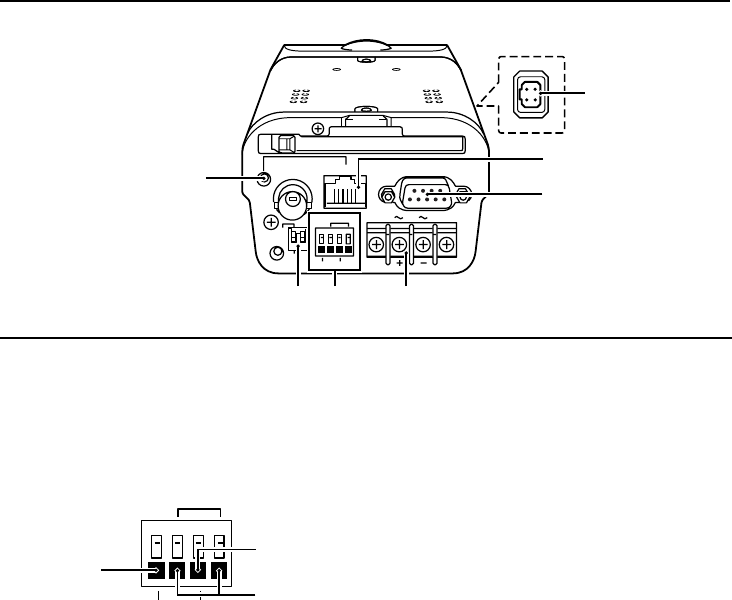
Name and Function of Each Part
CLASS 2 WIRING
PC CARD
RS-232C
ALARM IN OUT
MODEM
PC
COM
AC24V
DC12V
GND
1 2
ETHERNET
POWER
MONITOR
OUT
8
H
G
JF
I
9
8
Link indicator
This indicator illuminates when the camera is
connected to a network. It flashes while data
transmission is in progress.
9
ALARM terminals
A
ALARM IN terminal
Connect this terminal to an infrared
sensor or similar use in external detection
of intruders.
B
ALARM OUT terminal
Connect this terminal to a buzzer or lamp
that is used to warn when the motion
sensor detects an alarm.
C
Ground terminal (COM)
F
24 V AC/12 V DC input terminals (AC24V,
DC12V, GND)
G
RS-232C connector
Use this connector to connect the camera to
a modem for transmission of data along
telephone lines, or for connecting the camera
to a computer.
Use the PC/MODEM select switch to change
the camera operation between modem and
computer operation.
H
ETHERNET connector
Use this connector to connect the camera
directly to a computer or to a network. Use a
10Base-T or 100Base-TX (Category 5, UTP)
cable to make the connection.
I
Lens iris output connector
Connect this connector (4-pin socket) to the
lens iris plug of the automatic iris-type lens
(sold separately).
J
PC/MODEM select switch
Use this switch to set the function of the
RS-232C connector when connecting the
camera directly to either a modem or
computer.
Note:
•
Make sure that the camera’s power is turned
off before setting the function of the
RS-232C connector.
•
Using the RS-232C connector to connect the
camera to a computer is only done for
service purposes. You should not use this
switch yourself.
ALARM IN OUT
COM
A
B
C
L5AB2/US (VCC-WB2000) GB 2002, 7, 4
– 6 –
English


















